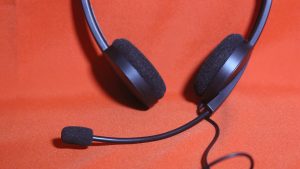Throughout my teaching career, I have strived to find meaningful ways to integrate technology into day-to-day routines. My earliest memory of working to integrate technology in the classroom is working one-on-one with a grade 6 student and teacher to learn to use Dragon Naturally Speaking to support the student with their classroom writing. I remember feeling frustrated at the time because we had a vision of how we wanted the technology to work inclusively within the classroom, but the software just wasn’t capable of doing what we needed it to do in a noisy and active classroom. Eventually, we agreed that we were spending most of our time learning and adapting to the technology rather than the technology helping the student succeed in their writing.

When I think back to the time and energy spent trying to use Dragon and compare it to the multitude of apps that are now being used in classrooms on a daily basis, the progress made is breathtaking! I have always been excited about edtech and the possibilities for enriching learning experiences through its use; however, I know that is not the experience of many of my colleagues. I’ve often advocated for the purchase of new devices and apps to try with students and currently have the role of Technology Lead Teacher in my school. When colleagues come to me with edtech questions and ideas, I find it exciting and rewarding to explore new ways of integrating technology into student’s day-to-day instruction.
As I reflect on my own experiences using technology in the classroom and section 4.2 in William’s book, Old wine in new bottles, I find myself with more and more questions about the use of technology in the classroom and how we’ve gotten to where we are. The scenarios provided in the book reference post-secondary learning environments and during my reading I would often pause to reflect on what those scenarios would look like in a K-7 classroom. I feel that most of the online learning models discussed in the chapter would be quite ineffective in elementary and middle years classrooms. Throughout the pandemic, a lament often made by myself and my colleagues was the daily struggle of being able to truly engage young learners through technology and the seemingly endless mountain of hurdles to clear just to get students online, let alone engaged with their learning.

After my experiences with pre and post pandemic teaching, and now having read William’s chapter on Methods of Teaching with an Online Focus, I wonder more about the significance of the target audience in blended learning. Clearly, as with any design for learning, the audience plays a significant role in how subject knowledge will be shared. I am curious how, or if, the diversity between elementary, secondary, and post-secondary audiences has affected the integration of technology in each of the different learning environments. My own experiences with blended learning only extend to grade 7. I learned quite quickly in my own classroom that if the technology being used was in addition to learning, instead of to support student engagement with knowledge being studied, the students were off task and disengaged from learning. I assume this to be true across all age groups, however I do wonder if some of the more intrinsic capacity of secondary and post-secondary students to persevere and stick with their learning has had any impact on the evolution of blended learning at those levels.
When I think back to my own experiences with blended learning in my university education, it often felt like the online portions of each class were simply additional work and I never felt engaged or that my learning was enriched by those experiences. As a result, I would find myself wanting to skip them altogether if I felt their weighted mark was not worth the time to do the work. Comparing that online learning experience to my experiences so far in this course, I already feel more connected to the instruction and content being studied.
Great questions, Amy. I think that the audience does play a key role in what type and how successful blended learning will be. I teach 4/5 and agree that many of the scenarios presented would not function for my students. It is not only their age but also the digital divide that impacts this sucess (we are a community school and many families don’t have devices or internet). For me, I find that the best time of blended learning for this age group is the use of technology in school where they do have access to these devices and teacher support.
I agree with you, Brittney. I would love for my students to be able to engage with their learning through technology at home, but unfortunately that just isn’t a possibility for all of them. I’ve found when I try to assign digital tasks for them to do at home that we can build off of in class, we end up using class time anyway for them to catch up on the at home tasks. I’ve been learning to be more critical about my digital tasks in the classroom to make sure they are truly advancing student understanding of what we’re studying.